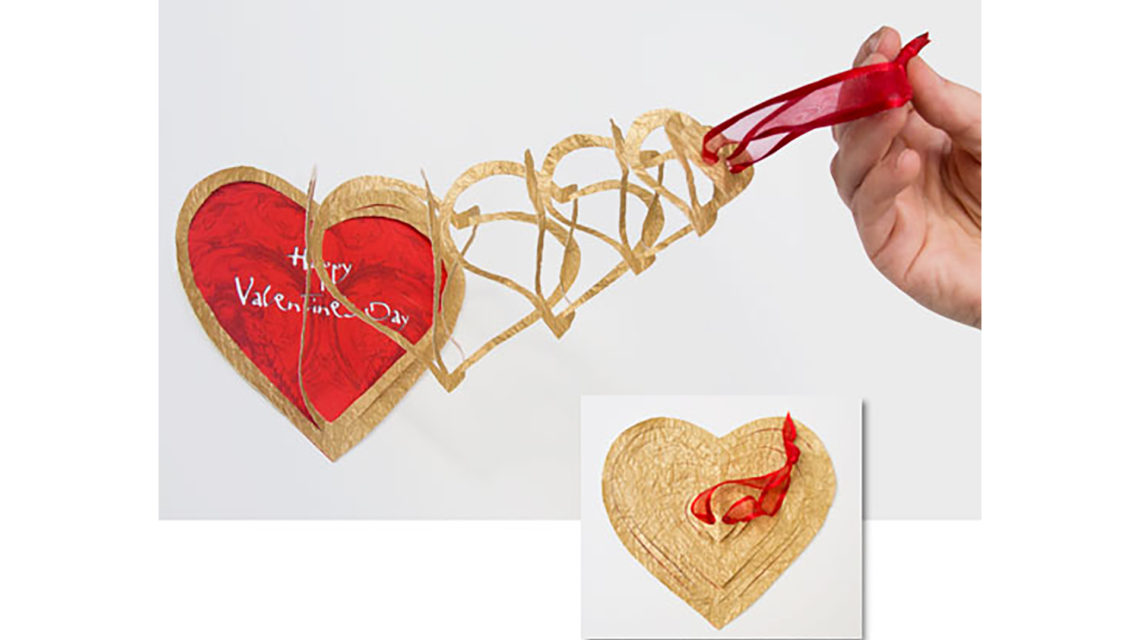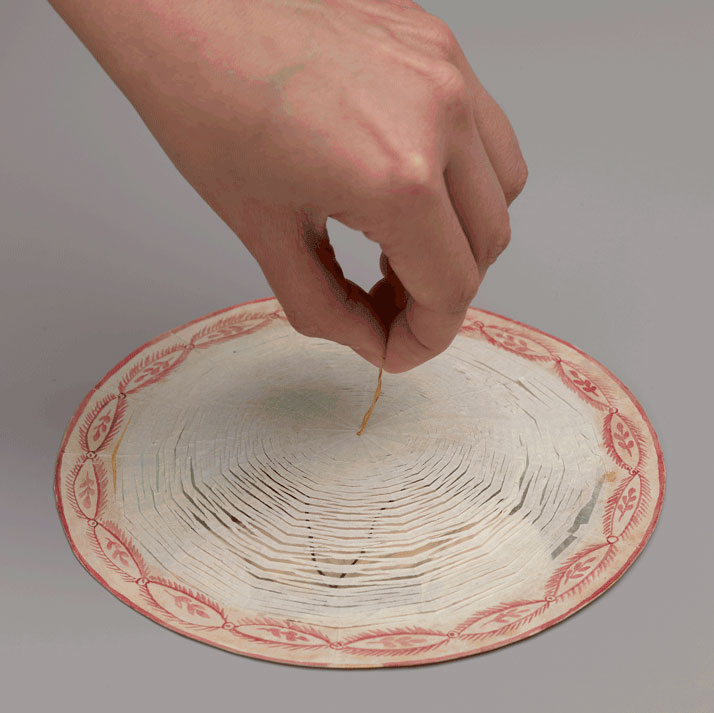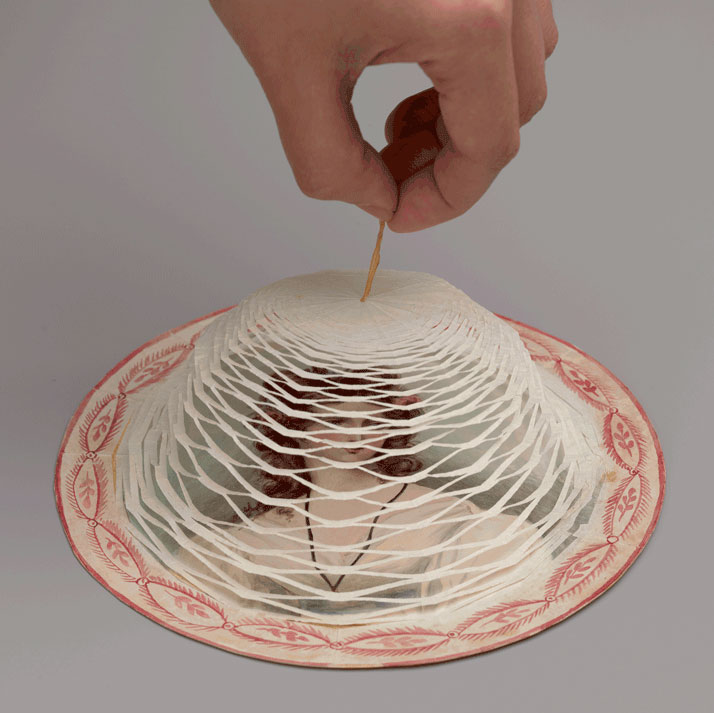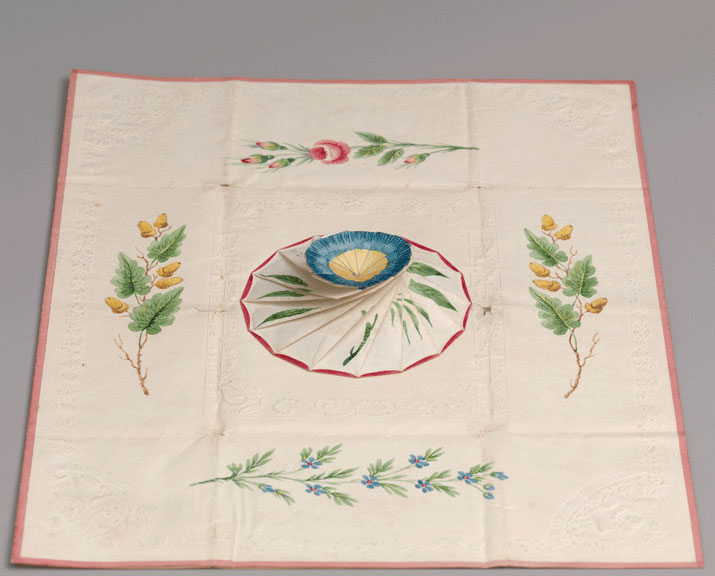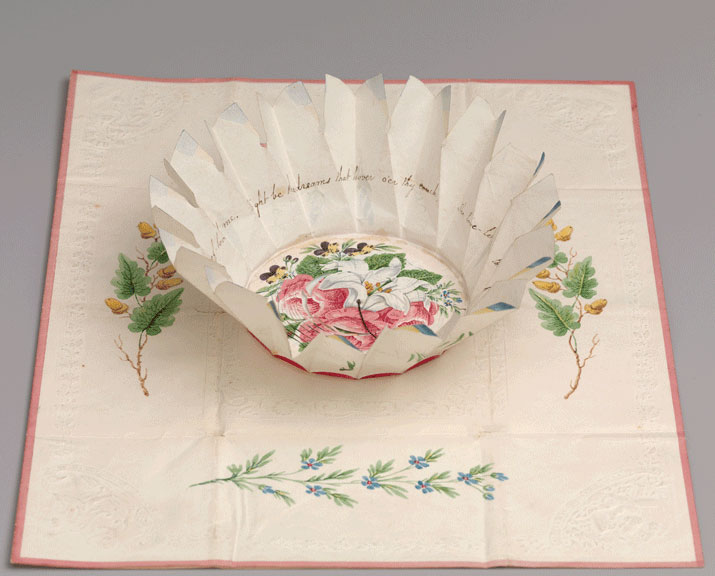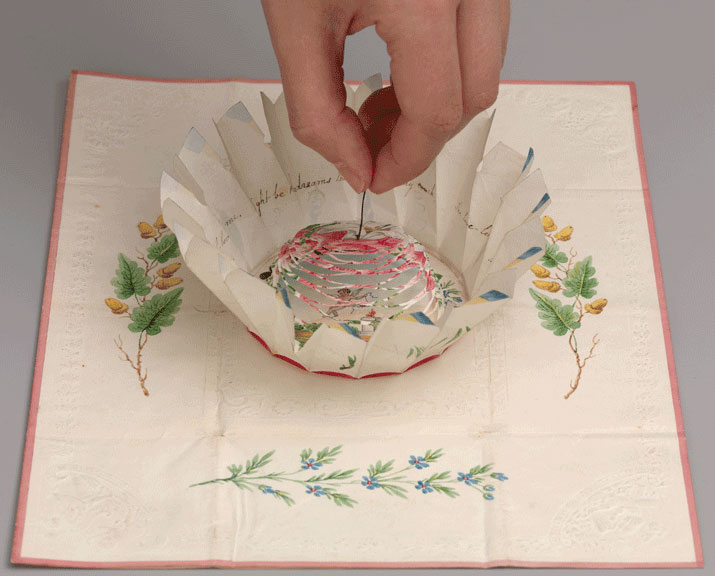The Victorians popularized the “cobweb” valentine of intricately cut paper; I made this one-of-a-kind 21st century version earlier this year.
I began with the red heart with its Valentine’s Day message, adhering it to light cardboard for stiffness. Topping that is gold tissue paper which I cut into a pattern of nesting half-hearts and finished by adding a ribbon. Pulling up on the ribbon unfurls the gold heart to reveal the message.
Click here for a great article about a collection of beautiful Victorian cobweb Valentines at the Metropolitan Museum of Art in New York City.
Here are some of them.
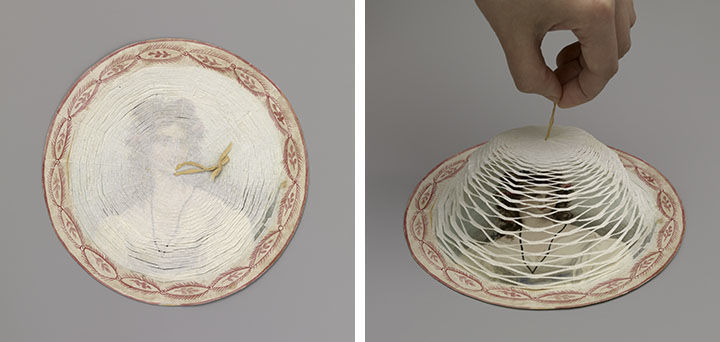
Cobwebs could be made by hand or bought as a machine-made product, both with various levels of intricacy. For the more modest handmade version, let’s first look at a simple circle of cardboard dated around 1830–40 (above). The web itself is cut out of a thin white tissue paper, and is edged with a pink watercolor border. A tiny yellow ribbon at the center allows you to lift up the carefully cut web, revealing a glorious portrait of a beautiful woman. Her long, dark ringlets are caught at the sides with roses, and she wears a golden locket suspended from a black cord over her bodice. Through the protection of the tissue web, the image has retained its vivacity over the 200 years since it was produced.
Below: Anonymous (British, 19th century). Cobweb valentine with morning glory, 1840. Watercolor, pen and brown ink on cameo-embossed paper, Sheet: 7 7/8 x 9 3/4 in. (20 x 24.7 cm). The Metropolitan Museum of Art, New York, Gift of Mrs. Richard Riddell, 1981 (1981.1136.540)
